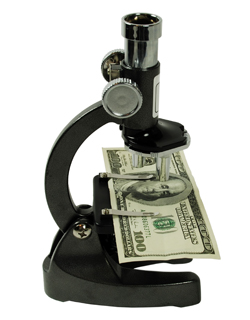Capitol Hill is buzzing over the budget these days. But for those of us not fully in tune with the budget process, all of the talk might sound like little more than, well, a buzz in our ears.
We can’t, however, brush it off: budgets for the NIH, FDA, CDC, and other important agencies are in danger of being cut. This is a time for science and research advocates to both understand and get involved in the federal budgeting process. So, consider yourself automatically enrolled in Budget 101, your introduction to the federal budget.
First, it’s important to realize that in Congress right now there are two concurrent arguments about two separate budgets:
Fiscal Year 2012Affecting: Oct. 1, 2011 – Sept. 30, 2012
What’s going on? On Feb. 14, President Obama submitted his
2012 budget proposal to Congress. The budget will now proceed through Congressional committees and so forth (see below).
Fiscal Year 2011Affecting: Now – Sept. 30, 2011
What’s going on? The 2011 budget was meant to have been completed and signed months ago, but a lack of movement in Congress has left the government functioning under a continuing resolution (CR). The CR stipulates that, for the time being, all areas of the federal government receive funding at the same level as the previous (2010) fiscal year. The CR, however, expires on March 4, at which time the federal government will shut down if no budget is ready. Currently, the Republican-controlled House has passed its own version of the FY2011 budget, but the Democrat-controlled Senate will likely block that budget, forcing a compromise.
As you can see, there’s been a holdup in the FY 2011 budget-making process. Here’s how the process is supposed to run, with a focus on how funding for agencies like the NIH goes through:
Step 1:About one year before the president’s budget proposal, individual agencies (like the NIH, FDA, etc.) begin planning for the latest budget. They work with the White House’s Office of Management and Budget (OMB) to come up with a budget strategy that also address the president’s priorities – fields and issues in which he’d like to see greater investment.
Step 2:About six months before the president’s budget proposal, agencies have submitted their budget proposals and are negotiating with the OMB. By January, budget proposals should be finalized and compiled.
Step 3:The president submits his budget proposal to Congress in February.
Step 4:House and Senate budget committees discuss their own overall goals for spending and government revenue, which are then voted on. In cases of disagreement between the houses, a conference committee is set up. This step should take place February through May.
Step 5:House and Senate appropriations committees take a closer look at the individual agency budgets and write bills that are then voted on by the individual house. Again, when there is disagreement between the Senate and House, a conference committee settles the difference. This step should take place June through September.
Step 6:Appropriations bills are sent to the president - hopefully before Oct. 1, the start of the fiscal year. That, however, did not happen in time for FY2011, so a continuing resolution was passed instead. Continuing resolutions are not uncommon, but it is rare for a resolution to expire and lead to a government shutdown.
Step 7:Agencies receive their funding.
If you’d like to learn more, check out The Washington Post’s
interactive feature on the budgeting process, or this
AAAS presentation on the budget process and R&D investment. Also, be on the lookout over the coming weeks as Research!America’s own website is updated with information about the federal budget.



















